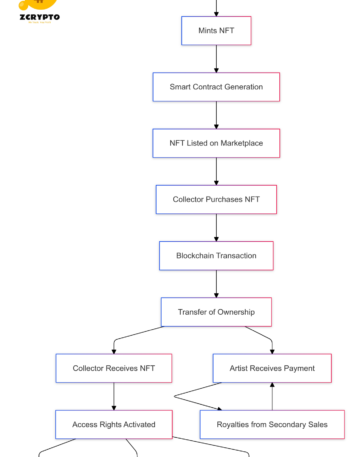When it comes to options trading, understanding the nuances of option pricing is crucial for making informed decisions. While many traders focus on the intrinsic value of an option, which is tied directly to the underlying asset’s price, it’s equally important to grasp the concept of extrinsic value. Extrinsic value captures external factors that influence an option’s price but are not directly related to the asset’s current market price. In this article, we will delve into how time to expiration, market volatility, interest rates, and dividends impact extrinsic value in options pricing.
- How to Calculate and Interpret Dividend Per Share (DPS): A Comprehensive Guide for Investors
- Understanding Economic Depreciation: How Market Value Affects Your Assets
- Understanding the Free Look Period: Your Safety Net in Insurance and Investment Decisions
- Understanding Investment Demand: How Economic Conditions and Interest Rates Shape Business Investment Decisions
- Maximize Your Savings: A Comprehensive Guide to the Child Tax Credit
Understanding Extrinsic Value
Extrinsic value is a component of an option’s price that reflects factors outside the intrinsic value. Unlike intrinsic value, which is determined by the difference between the underlying asset’s price and the strike price, extrinsic value encompasses elements such as time decay, market volatility, and interest rates. These external factors can significantly affect an option’s price and are essential for traders to understand in order to make profitable trades.
Bạn đang xem: Unlocking Extrinsic Value: How Time, Volatility, and Market Forces Impact Option Pricing
Time to Expiration
Impact on Option Pricing
The time to expiration is a critical factor in determining an option’s extrinsic value. Options with longer durations typically have higher extrinsic values due to greater uncertainty over a longer period. This uncertainty translates into a higher premium for the option because there is more time for significant price movements in the underlying asset.
As an option approaches its expiration date, time decay accelerates. Time decay, or theta, is the rate at which the extrinsic value of an option decreases as it gets closer to expiration. This means that options lose value more rapidly as they near their expiration date, making long-term options generally more valuable than short-term ones.
Practical Example
Consider two call options on the same stock: one with six months until expiration and another with just one week left. The six-month option will have a higher extrinsic value due to the longer time frame, reflecting greater potential for price movements in the underlying stock. In contrast, the one-week option will have much less extrinsic value because there is less time for significant price changes.
Market Volatility
Definition and Impact
Market volatility plays a significant role in determining an option’s price. Volatility measures the degree of variation in the price of an underlying asset over a given period. Higher volatility increases the potential profitability of an option, leading to higher prices.
There are two key types of volatility: statistical (historical) volatility and implied volatility. Statistical volatility looks at past price movements to gauge future volatility, while implied volatility is derived from current option prices and reflects market expectations about future volatility. Traders use these measures to determine if options are cheap or expensive relative to historical norms.
Volatility Estimation
Xem thêm : What is Music NFT? Transforming Artist-Fan Relationships
Estimating future volatility is challenging but crucial for accurate option pricing. Traders use current option prices and other known variables to estimate future volatility. This process involves complex models that consider historical data and market sentiment to predict how volatile the underlying asset might be in the future.
Interest Rates
Influence on Option Pricing
Interest rates also have a significant impact on option prices. Rising interest rates generally increase the value of call options while decreasing the value of put options. Conversely, falling interest rates tend to decrease call option values and increase put option values.
This relationship arises because higher interest rates make it more expensive to hold onto cash (as it could be earning interest), thus increasing demand for call options that allow investors to buy assets at a fixed price later. On the other hand, lower interest rates reduce this opportunity cost, making put options more attractive as they allow investors to sell assets at a fixed price.
Comparative Analysis
For example, if interest rates rise from 2% to 3%, a call option might become more valuable because investors are willing to pay more for the right to buy an asset at a fixed price when they could otherwise earn higher returns from holding cash. Conversely, put options might become less valuable as investors are less inclined to sell assets when they can earn higher returns from holding onto them.
Dividends
Effect on Option Prices
Dividends can also influence option prices significantly. Expected dividends typically decrease the price of call options and increase the price of put options around ex-dividend dates.
When a company announces a dividend payment, it reduces its stock price by the amount of the dividend on the ex-dividend date. This reduction makes call options less valuable since they give holders the right but not the obligation to buy shares at a higher strike price relative to post-dividend prices. Conversely, put options become more valuable as they give holders protection against selling shares at lower post-dividend prices.
Strategic Considerations
Traders often strategically navigate these dividend-related fluctuations by adjusting their positions before ex-dividend dates or using strategies like selling calls before dividends are paid out or buying puts if they anticipate significant dividend payments.
Option Pricing Models
Overview
Xem thêm : Understanding Covered Interest Rate Parity: How to Hedge Foreign Exchange Risk and Avoid Arbitrage
Several option pricing models help traders estimate fair values for options based on various parameters such as underlying asset price, strike price, time to expiration, interest rates, and volatility.
The Black-Scholes model is one of the most widely used models; it assumes constant volatility and continuous trading but provides a good starting point for estimating option values. Other models include binomial option pricing and Monte-Carlo simulations which offer more flexibility in handling complex scenarios.
Practical Application
In practice, these models are used extensively by traders and investors alike. By inputting current market data into these models (such as underlying asset prices, strike prices etc.), traders can estimate whether an option is overpriced or underpriced relative to its theoretical fair value. This helps them make informed decisions about buying or selling options based on their strategies.
FAQs
-
How does time to expiration affect an option’s price?
- Time to expiration increases an option’s extrinsic value due to greater uncertainty over longer periods; however, this value decreases rapidly as expiration approaches due to time decay.
-
What is the impact of market volatility on option prices?
- Higher market volatility increases potential profitability leading to higher option prices; traders use historical and implied volatilities to gauge if options are cheap or expensive.
-
How do interest rates influence option pricing?
- Rising interest rates increase call option values while decreasing put option values; falling interest rates have the opposite effect due to changes in opportunity costs associated with holding cash versus assets.
-
What role do dividends play in option pricing?
- Expected dividends decrease call option prices while increasing put option prices around ex-dividend dates due to changes in underlying stock prices post-dividend payments.
-
What tools can help in understanding and trading options based on extrinsic value?
- Option pricing models like Black-Scholes model along with binomial option pricing and Monte-Carlo simulations help estimate fair values based on various parameters including underlying asset prices, strike prices etc., enabling traders make informed decisions about buying or selling options.
Nguồn: https://staredecisis.quest
Danh mục: Blog





